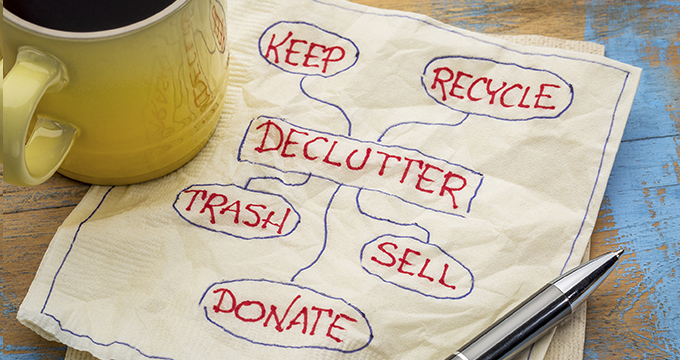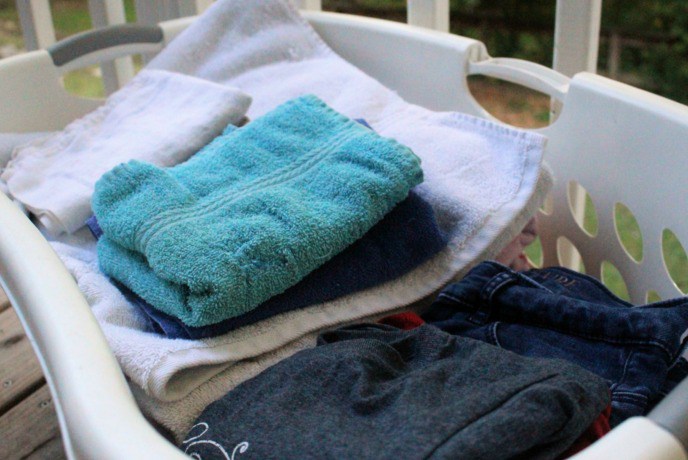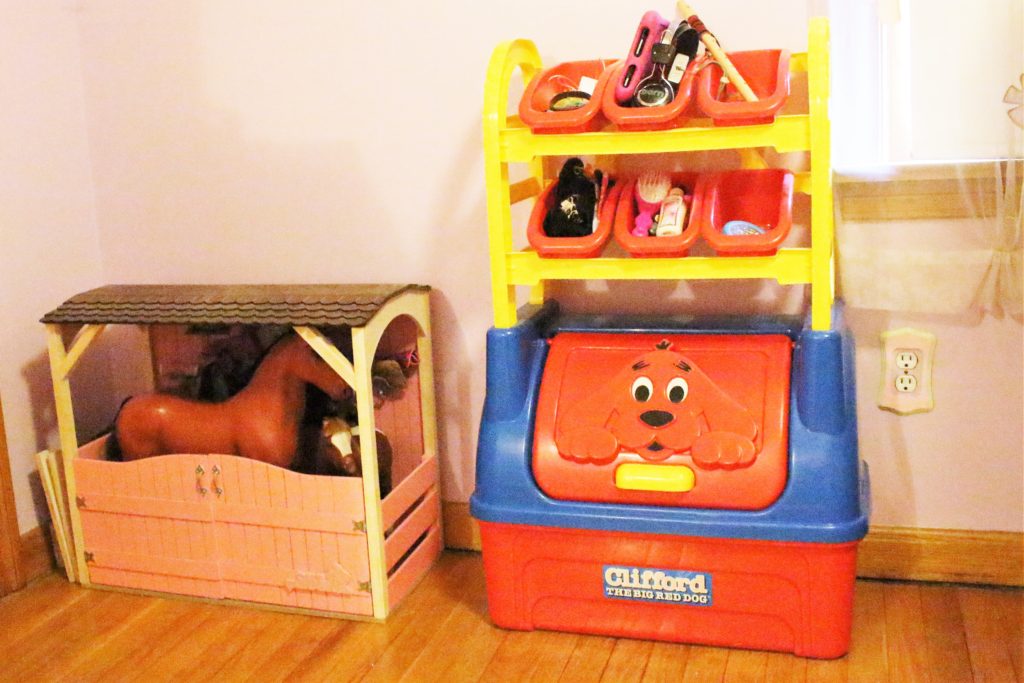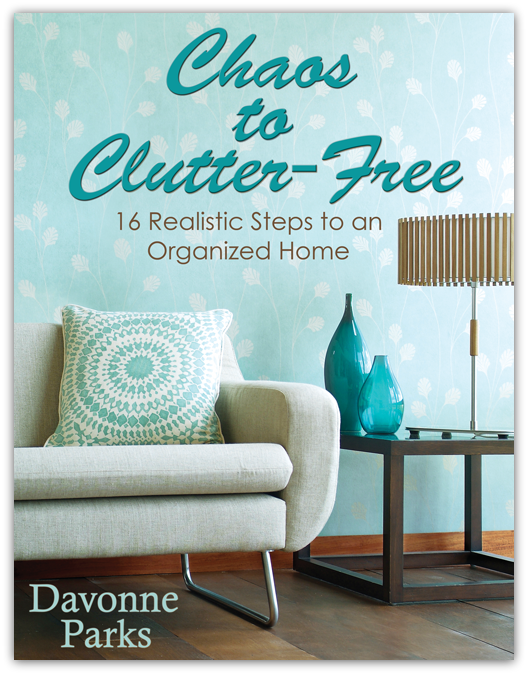
Special Note: This article is part of an intentional home series by Davonne Parks. To view the rest of the articles in this series, go here.
We spent time last week talking about basic ways to prioritize homemaking. This week we’re getting a little more specific with some very practical tips to help you quickly get your home under control, and I’m really excited to share these tips and ideas with you!
I want to start the week off by mentioning that I don’t think any of us would plan on spending $3,000 a month if we have an income of $2,000 per month. That’s because we understand money is limited – we know we shouldn’t spend more than what we have, or we’ll eventually end up in a huge financial mess.
We also know that we need to plan, or budget, our time accordingly because each of us has exactly 24 hours every day.
I think a fact we sometimes miss, however, is that we also need to budget our stuff.
All of us have different size houses and different family dynamics, just like we have different incomes and expenses, and our possessions need to neatly fit inside our homes while still meeting our family’s needs.
If we have so much stuff that our homes feel cluttered, or if there are rooms we can’t even use because they’re filled to the brim, then we are not budgeting our things – our possessions – wisely.
Unless you want to constantly feel stressed out and overwhelmed, you should not keep more things than you have space to keep. For example, if you have four shelves’ worth of towels but you only have one towel shelf, then you’ll always have at least three shelves’ worth of towels taking up space where they don’t belong.
If you want to have an organized home that your family enjoys living in, you need to budget your space accordingly.
How to Quickly Declutter the Top 3 Problem Areas in Your Home:
1. Purge Your Clothes
If your laundry was completely caught up right now, would your clothes, towels, and bedding easily fit into their designated locations? If not, it’s time to have a quick purging session!
Do this by quickly going through your clothes and linens to figure out what you need to keep and what you can donate. Don’t get sentimental or overthink this – just quickly get rid of anything you haven’t worn in the past year, as well as clothes you wear that don’t fit well or that you don’t really like.
Do the same thing for your kids – do they really need 10 sweatshirts in their drawer if they only wear their 2 favorites over and over again? {Spoiler Alert: The answer is No!}
When you sort your bedding and blankets, think about how many you use in the winter, when you need those items the most. I personally love having extra blankets, but I also know my family uses the same three blankets all the time. So a few years ago, I donated a few trash bags full of towels, blankets, and sleeping bags to a local donation center, and we’ve never missed any of it! (In fact, one of my children read this article over my shoulder and was shocked to discover this because she’d never even noticed any of those things were gone!)

2. Clean Out Your Cabinets
Look through your kitchen cabinets with the same mindset you need to have about organizing your clothes – anything that hasn’t been used in a year should be placed into a donation bag and donated to a local shelter or second-hand store.
And if you have plenty of plates and cups, only keep the ones you really need and donate the rest, even if you do use all of them.
I was afraid to get rid of dishes that we regularly use, but purging them has actually been a huge blessing for my family – we can no longer have 3 loads of dishes to wash at a time because we’re forced to turn the dishwasher on regularly just so we can have clean plates and forks!
Having decluttered cabinets and a limited number of pots and pans will make cleaning the kitchen take much less time than it used to.

3. Toss Some Toys
Grab a black trash bag and start tossing toys into there – don’t make this into a big, complicated situation just yet, unless you have the time to be really thorough.
When I first started decluttering my home, I cleaned in layers. The first time, I only decluttered big problem areas so I could quickly make our home more inviting. Later, when I was ready to make long-term, lasting changes, I thoroughly decluttered the entire house.
Do that with your kids’ toys. Get rid of the items that are broken, rarely used, tossed aside and forgotten. You can be more thorough later, but for now just give yourself a quick win and move on!
Older kids will probably want to help with this. For younger children, you might want to send them to grandma’s or let them watch a movie so you can work quickly, then surprise them with a cleaner toy area when you’re finished.

As you’re cleaning, decluttering, and organizing, getting rid of extra things will help you make sure your belongings can neatly fit into your space.
Your donated items can be a huge blessing to someone who really needs them, and a wonderful blessing to your family too, because you’ll have a neater, more organized, easier-to-clean home to relax in and enjoy together!
If you wish you could have thorough step-by-step guidance for decluttering every area in your home, then treat yourself to a copy of my eBook, Chaos to Clutter-Free. This eBook offers virtual hand-holding as you declutter your possessions. Plus, if you implement the steps provided, you’ll no longer panic and hide when unexpected visitors come knocking on your door.

“Do not lay up for yourselves treasures on earth, where moth and rust destroy and where thieves break in and steal; but lay up for yourselves treasures in heaven, where neither moth nor rust destroys and where thieves do not break in and steal. For where your treasure is, there your heart will be also.” Matthew 6:19-21 (NKJV, emphasis mine)
Personal Thought/Application Question: Are the areas listed in this article – laundry, kitchen, and toys – the top three clutter hot-spots in your own home, or is there another area that causes more clutter trouble?
![]()
 Davonne Parks believes that your role at home is valuable and she wants to help you thrive in your environment. Click here to receive immediate access to the FREE printable library she created just for you.
Davonne Parks believes that your role at home is valuable and she wants to help you thrive in your environment. Click here to receive immediate access to the FREE printable library she created just for you.
